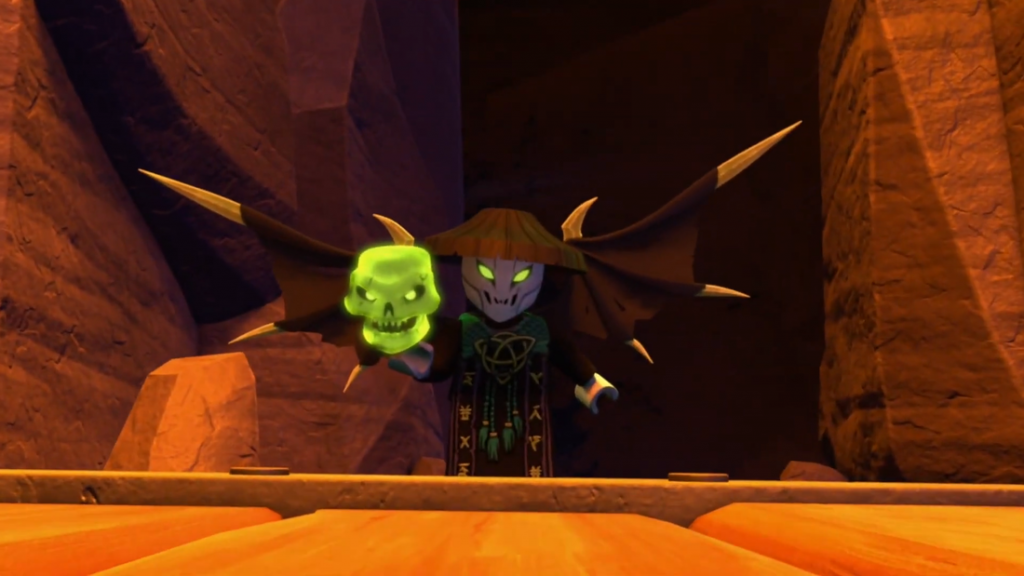Shintaro

The fabled Ivory City is represented by this mysterious but noble orchestral melody. It also represents certain parts of Shintaro’s more secretive side as well as the dangers such as the Dire Bats, making the location-based leitmotif have more to do with representing different aspects of Shintaro. The B section of the Shintaro theme represents the purity and good side of the kingdom, and as a result is commonly associated with Princess (and later Queen) Vania.
The Lowly/Upply

This leitmotif is one of the widest in scope that has ever been in the show, apart from the Overture itself. It represents all the groups of characters held down and oppressed by the Skull Sorcerer, with their journey of breaking free and fighting back. The theme is composed of a basic five-note phrase on horns and backing percussion that is repeated with different variations.
The Skull Sorceror

A loud and very imposing staccato melody on Esraj that represents the tyrant in control of the Dungeons of Shintaro, especially the Sorcerer’s big moments of arrival.
A series of quieter three-note phrases played on the same instrument as the Skull Sorcerer’s leitmotif, representing the artifact that gives the Sorcerer his power. It is mostly used in accompaniment to the Skull Sorcerer’s theme, paralleling the way the two interact on-screen.
The Munce

An orchestral composition for the green-skinned inhabitants of Shintaro, slow and plodding in some spots but mostly bright.
The Geckles

The Geckles are not represented by any one specific melody, but rather a group of short whimsical cues played on flute, assorted percussion, and staccato or plucked strings, representing their very process-based way of life.
Chompy

A mischievous tune played on strings and pitched percussion, representing Vania’s pet Shintaran Ridgeback. A slightly louder and more serious version is used in scenes with Chompy displaying his growth power. The melody itself is derived from the “Shintaro Fanfare” so both Vania and her dragon have connections to Shintaro’s music.
Lilly

An often somber but hopeful fifteen-note melody representing Cole’s mother and her legacy, which leads to its usage for Cole in the finale where he follows in her footsteps. In scenes where the leitmotif is used quietly it is played on a flute or piano, but during triumphant instances it utilizes horns and backing strings.
